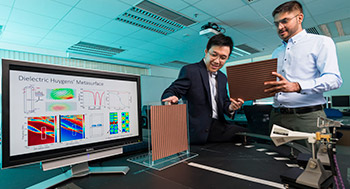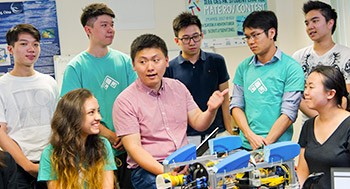Journal Paper authored by Team led by Prof Arindam Basu and Prof Haoliang Li being Published in Top Journal – Nature Communications
The collaborative research team led by Prof Arindam Basu (Professor of EE) and Prof Haoliang Li (Assistant Professor of EE), has published a paper in the top journal – Nature Communications, on 29 January 2025.
Title: Efficient nonlinear function approximation in analog resistive crossbars for recurrent neural networks
Authors:
- Prof Arindam Basu (Professor of EE, CityUHK)
- Prof Haoliang Li (Assistant Professor of EE, CityUHK)
- Mr Junyi Yang - first author, Mr Shuai Dong and Mr Pao Sheng Sun (PhD student at CityUHK supervised by Prof Arindam Basu)
- Mr Yichuan Cheng (PhD student at CityUHK supervised by Prof Haoliang Li)
- Prof Can Li (Assistant Professor, The University of Hong Kong)
- Mr Ruibin Mao - first author and Mr Mingrui Jiang (PhD student, The University of Hong Kong)
- Dr Giacomo Pedretti, Dr Xia Sheng and Mr Jim Ignowski (Hewlett Packard Labs, Hewlett Packard Enterprise, Milpitas, CA, USA)
This Nature Communications paper can be found at https://www.nature.com/articles/s41467-025-56254-6. To give you a glimpse of the research work, here is a quote from the abstract:
In this work, we experimentally demonstrate the implementation of a non-linear activation function integrated with a ramp analog-to-digital conversion (ADC) at the periphery of the memory to improve in-memory implementation of RNNs. Our approach uses an extra column of memristors to produce an appropriately pre-distorted ramp voltage such that the comparator output directly approximates the desired nonlinear function. We experimentally demonstrate programming different nonlinear functions using a memristive array and simulate its incorporation in RNNs to solve keyword spotting and language modelling tasks. Compared to other approaches, we demonstrate manifold increase in area-efficiency, energy-efficiency and throughput due to the in-memory, programmable ramp generator that removes digital processing overhead.







